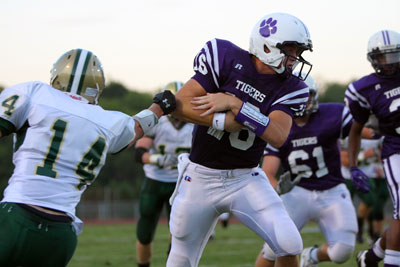All Nonfiction
- Bullying
- Books
- Academic
- Author Interviews
- Celebrity interviews
- College Articles
- College Essays
- Educator of the Year
- Heroes
- Interviews
- Memoir
- Personal Experience
- Sports
- Travel & Culture
All Opinions
- Bullying
- Current Events / Politics
- Discrimination
- Drugs / Alcohol / Smoking
- Entertainment / Celebrities
- Environment
- Love / Relationships
- Movies / Music / TV
- Pop Culture / Trends
- School / College
- Social Issues / Civics
- Spirituality / Religion
- Sports / Hobbies
All Hot Topics
- Bullying
- Community Service
- Environment
- Health
- Letters to the Editor
- Pride & Prejudice
- What Matters
- Back
Summer Guide
- Program Links
- Program Reviews
- Back
College Guide
- College Links
- College Reviews
- College Essays
- College Articles
- Back
Why We Must Reinvent The Game of Football
Football players engage in the most dangerous sport with inadequate knowledge of the impacts on their brains. Football players are subjected to more mild traumatic brain injuries (MBTI), also known as a concussion, than any other sport and these impacts lead to many brain diseases. It is time to make a reinvention in the game of football to better protect players.
Football players are subjected to the most head injuries of all sports. In an article by the American Academy of Pediatrics (AAP) high school football players experience 10.4 MBTIs every 10,000 exposures. According to the AAP, the average number of concussions is 4.17 per 10,000 concussions, making football almost three times the rate of concussions per exposure. An exposure is any time a player is put into a situation where the head could and/or did make contact with something be it the ground, another player’s helmet, or some other surface. This is significant in numbers because it simplifies down to 1.04 in every 1,000 and there are hundreds, if not thousands, of exposures by all of the players in a single game. This leads to the average game having one mild concussion. Studies show that football players experience MBTIs at a much larger rate than any other high school sport.
After repeated hits to the head over a long period of time, football player’s brains can start to develop irreversible damage and disease such as Chronic Traumatic Encephalopathy (CTE). CTE is the atrophy of many parts of the brain including but not limited to: the thalamus and cerebral hemispheres; it is caused by the repetitive subconcussive forces the brain experiences in a football game or practice (McKee et al). The atrophy of the specified parts of the brain means someone suffering from CTE would experience memory problems, behavioral changes, along with other symptoms similar to dementia and Alzheimer's. CTE is very dangerous and a serious threat to the brains of football players for two reasons. One, it can only be diagnosed with an autopsy, meaning the player is already deceased. And Two, a player could play a long career with no concussions, but the hits they experienced which were not great enough to cause a concussion, still could have a permanent impact on their brain. CTE poses a real and intimidating threat to any aspiring, current, and past players of the game.
People on the other side of this hot topic may say that the impacts of repeated head trauma and the development of CTE from said trauma are still not fully understood and thus we should not do anything until we know more. It is true CTE is a relatively new and not very well understood topic particularly its association with repeated head trauma. While this may be true, we are finding more evidence of the dangers of concussions and CTE every day. Even though there is not a definite or well-understood rule to CTE and concussions, it is in the best interest of young people’s brains to make changes now to prevent further problems. Being safe by changing rules to limit the number of head impacts a player can have in a game will save our youth from future problems.
The rules of football need to be changed to better protect players and their most powerful organ. Football players experience MBTIs at almost three times the average rate for other athletics. One major and permanently damaging consequence of football is the deterioration and atrophy of the brain known as CTE. Students should still have fun in high school and experience the memories created for life in football, but many of these young adults do not understand the negative impact this sport could have on them for life. It may seem like a silly question, but ask yourself, do you value your wellbeing more than a game and some memories? Use this newfound knowledge to help save America’s youth’s future!
Works Cited
Jenco, Melissa. “Study: Concussion Rates in High School Football Games Rising.” AAP News, 15 Oct. 2019, www.aappublications.org/news/2019/10/15/concussion101519#:~:text=Rates%20of%20concussions%20in%20high. Accessed 23 Sept. 2020.
McKee, Ann C., et al. “Chronic Traumatic Encephalopathy in Athletes: Progressive Tauopathy After Repetitive Head Injury.” Journal of Neuropathology & Experimental Neurology, vol. 68, no. 7, July 2009, pp. 709–735, academic.oup.com/jnen/article/68/7/709/2917002, 10.1097/nen.0b013e3181a9d503.

Similar Articles
JOIN THE DISCUSSION
This article has 0 comments.
